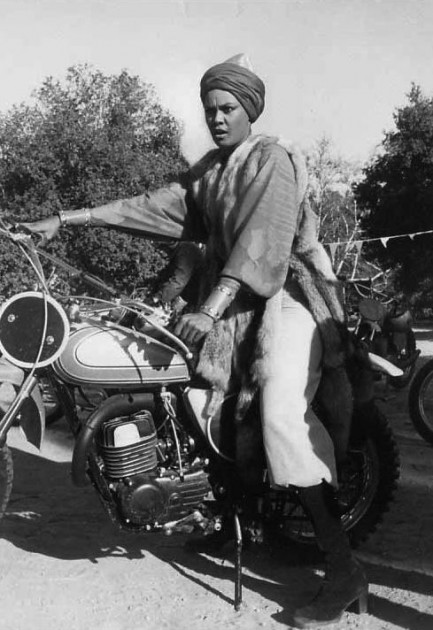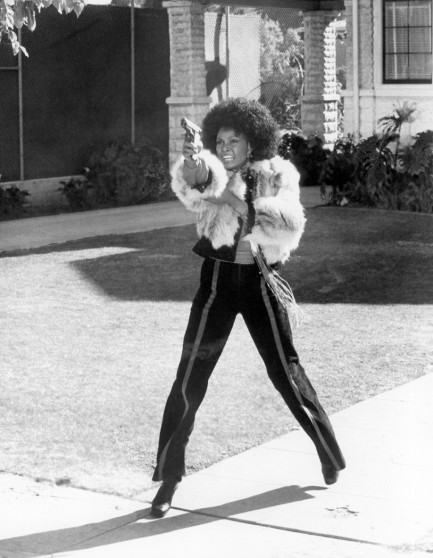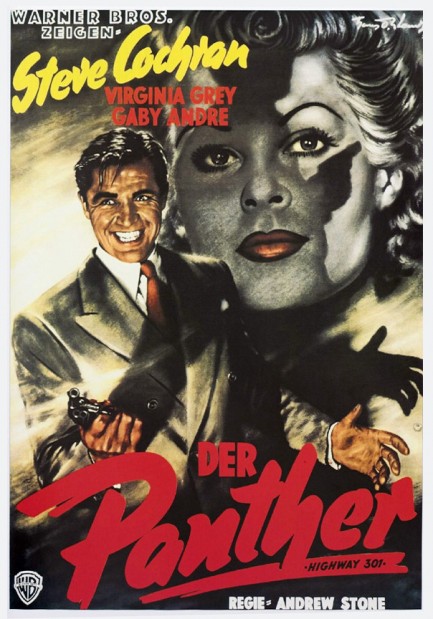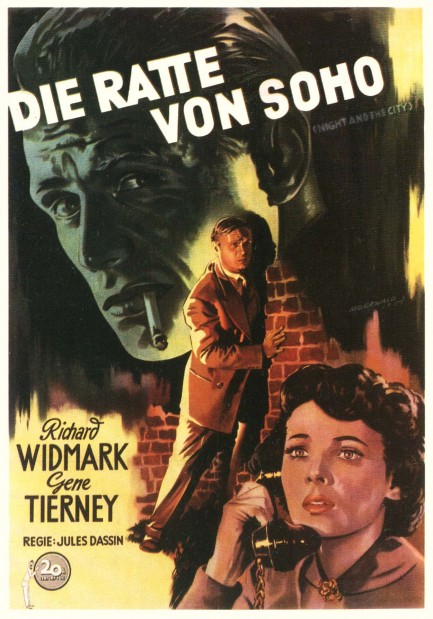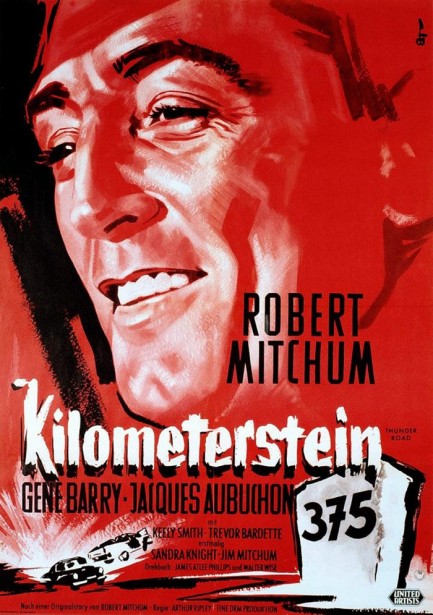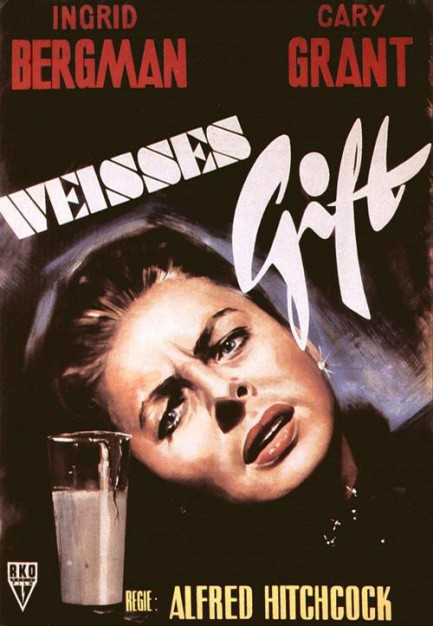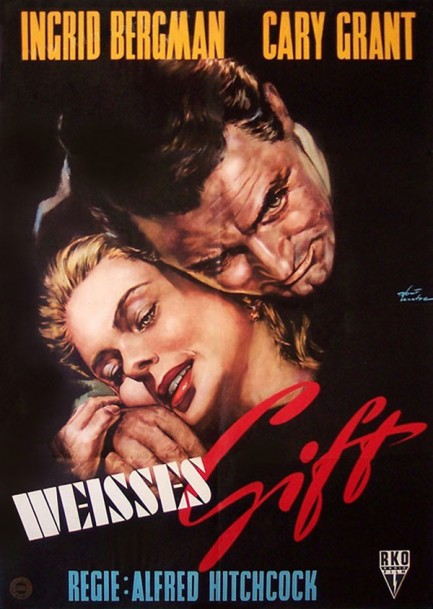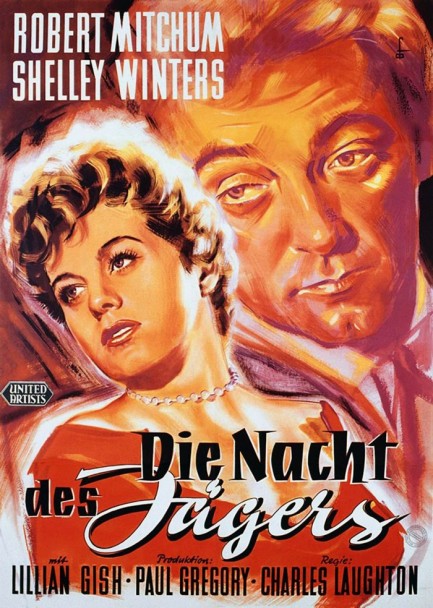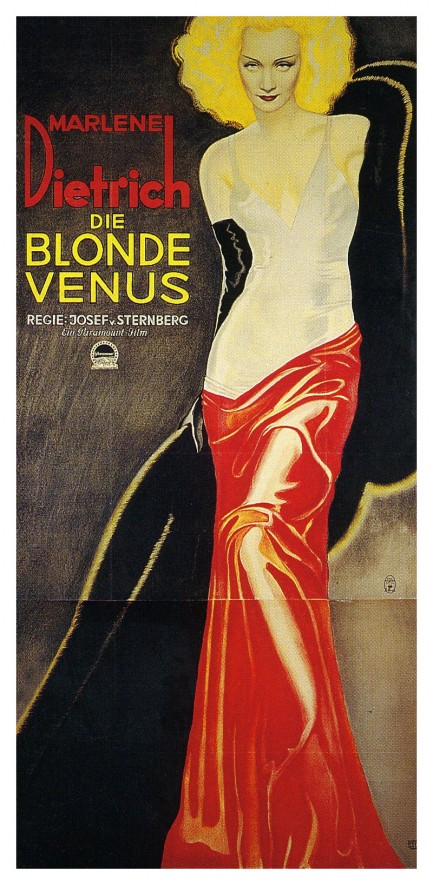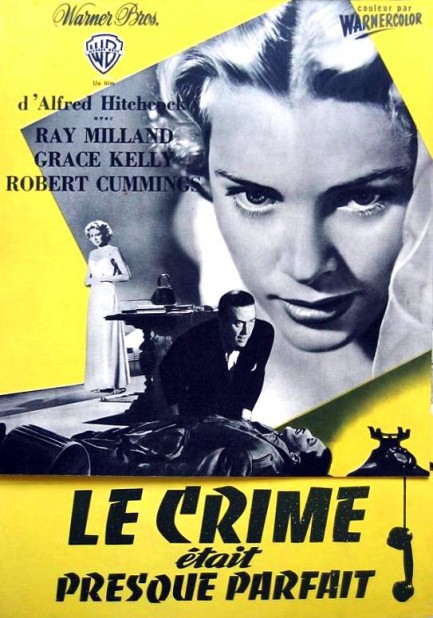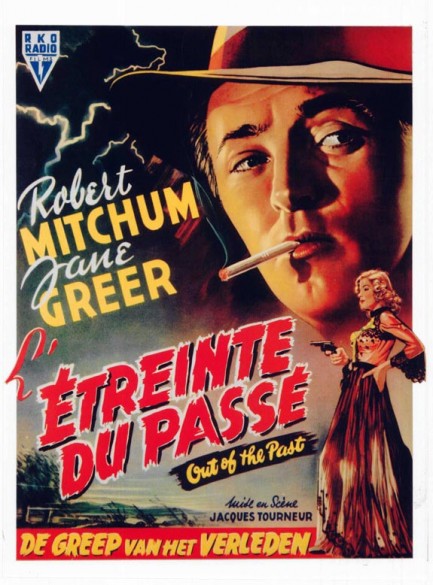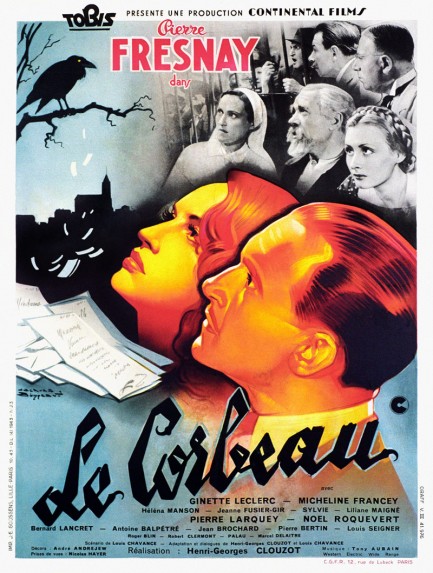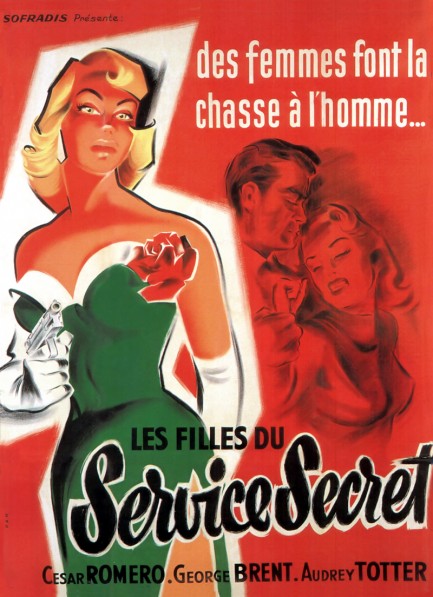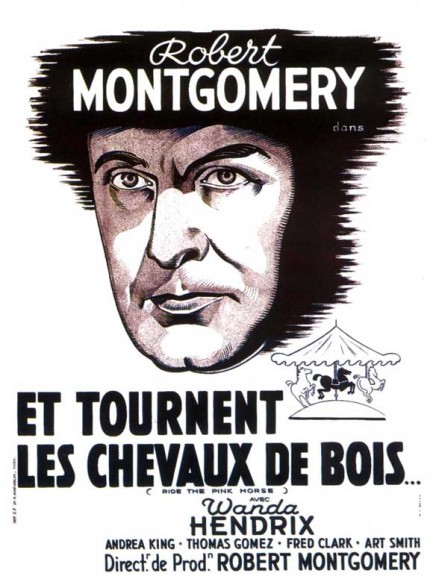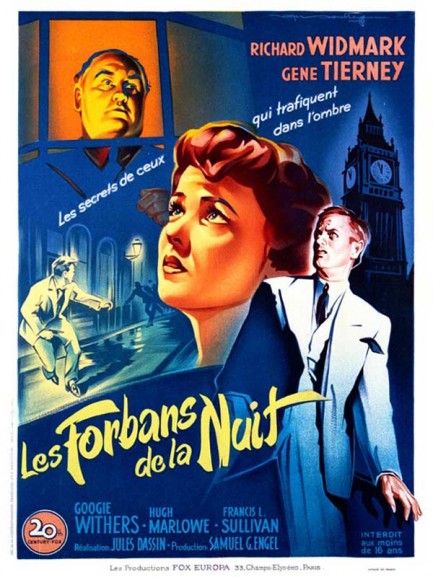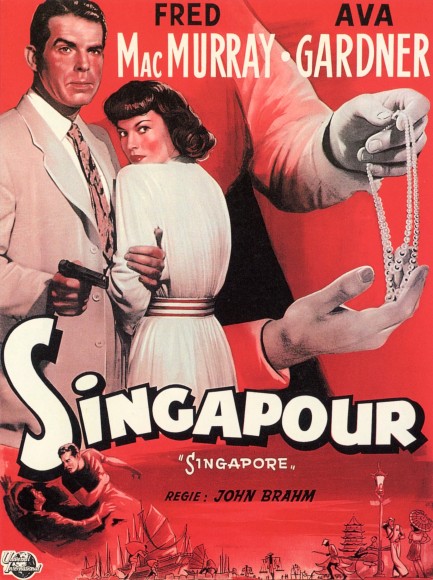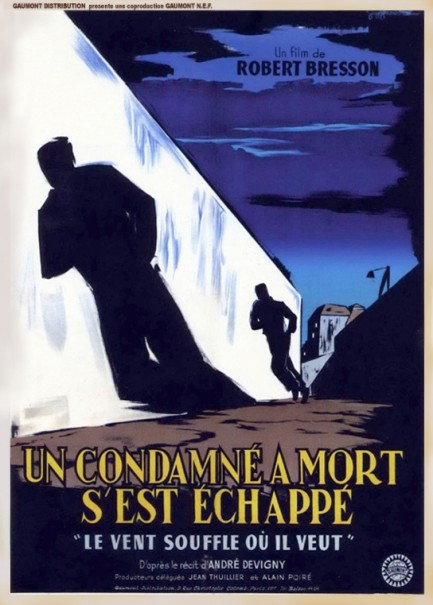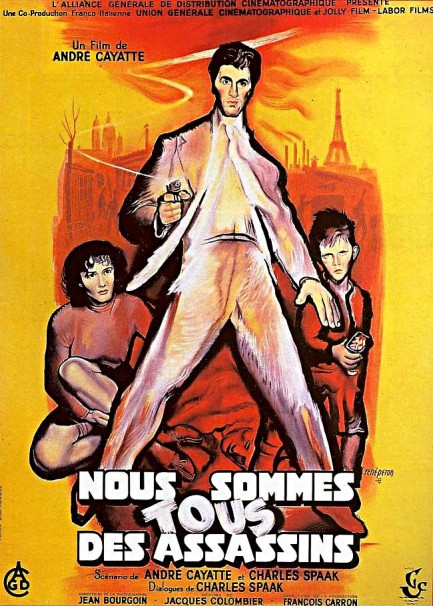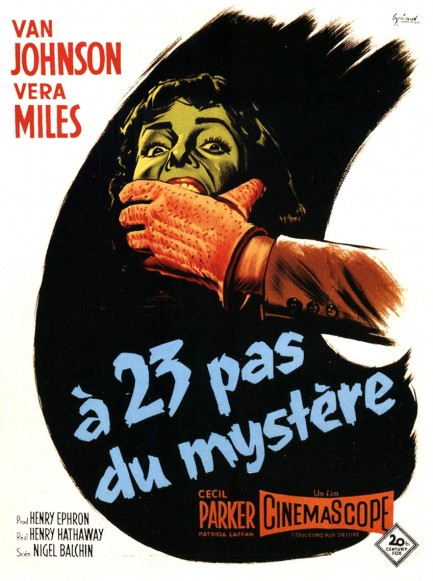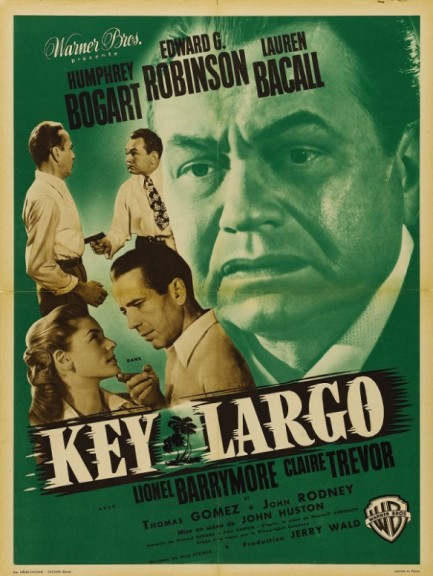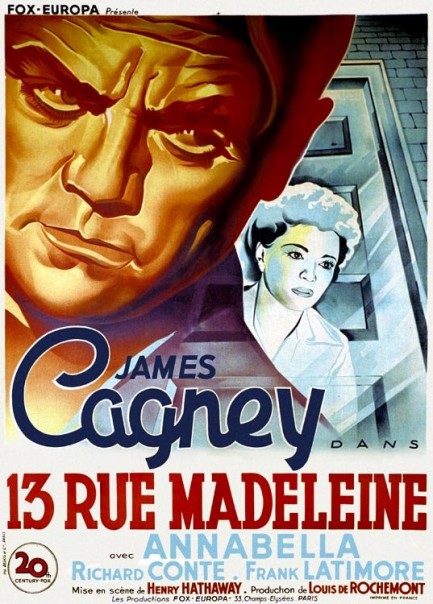 A heady new brew of tabloid gossip gets served up in Hollywood. 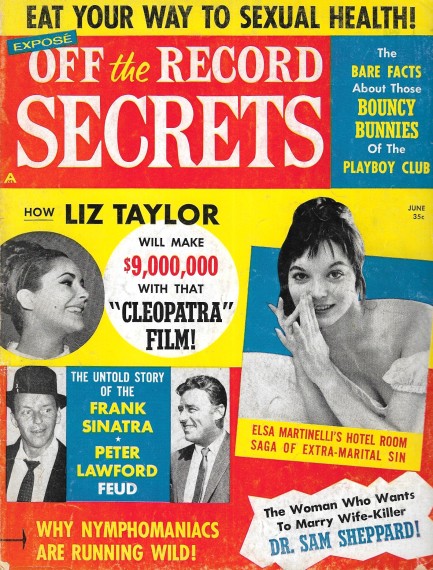
We have a brand new tabloid to our website today—the colorful Off the Record Secrets, of which you see its June 1963 cover above. This was published by an outfit calling itself Magazette, Inc., which aimed for the high end of the tabloid market with bright fronts along the same lines as the big boys Confidential, Whisper, Hush Hush, et al. Like those, Off the Record Secrets covers miles of ground between its pages, spilling on everyone from Hugh Hefner and his Bunnies, to Frank Sinatra and his Pack, to Elsa Martinelli and her hubby Franco Mancinelli Scotti, to Kirk Douglas and his bad behavior.
Of the items on offer, we were struck by the photo of Annette Stroyberg stuffing her face. We always thought trying to catch celebrities eating in embarrassing fashion started with the internet gossip sites, but apparently we were wrong. In any case you can see why the best restaurants have private dining rooms. Stroyberg must have been furious. Also of note, you Cary Grant fans get see him in a towel at age sixty-one. He's holding together nicely, though there seems to be some stomach sucking going on. Still, nothing to be ashamed of. He's got ninety-five percent of men his age beat.
The earliest issue we've seen of Off the Record Secrets is from January 1962. By the early 1960s the tabloid market was crowded, therefore owing at least partly to a logjam on newsstands, this magazine lasted only into 1964 before folding its tent. Because of its scarcity issues sometimes go for hefty prices. We got ours for $19.00. But we've seen them auctioning for $75.00. The high pricing means we may not buy another example for a while, but we'll get it done. In the meantime, get acquainted with Off the Record Secrets. We have multiple rare images for you below.
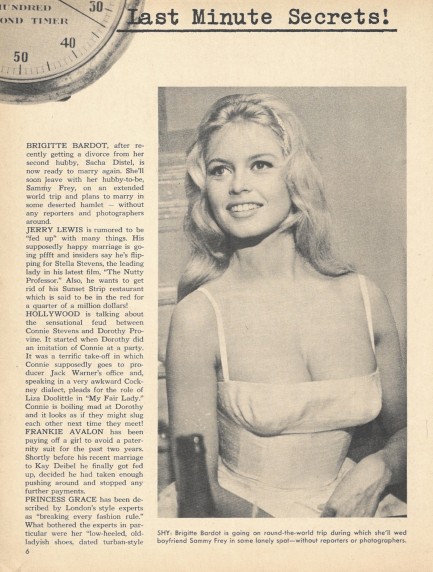 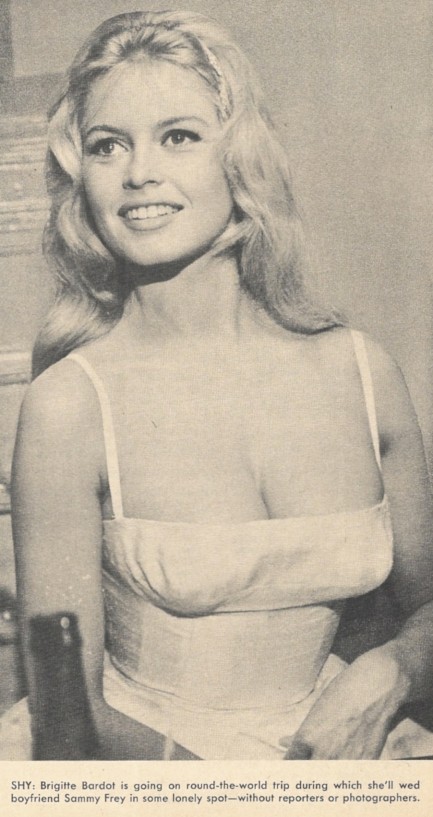 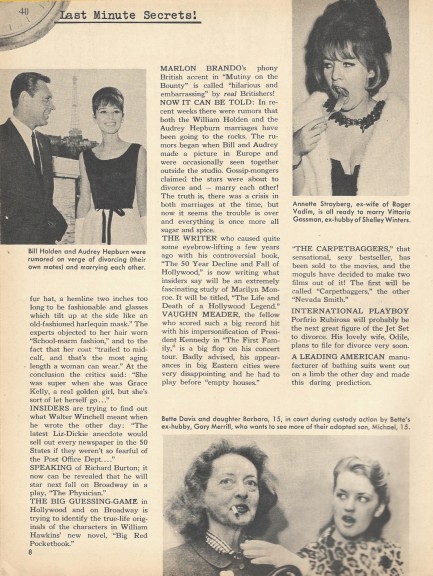   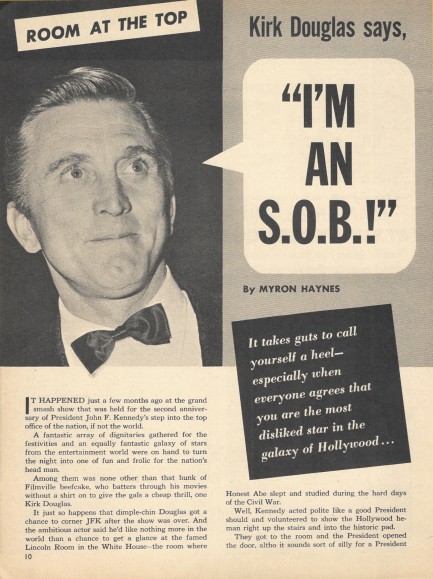 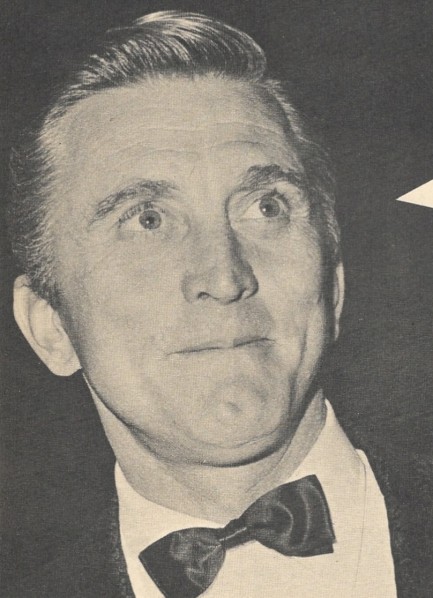 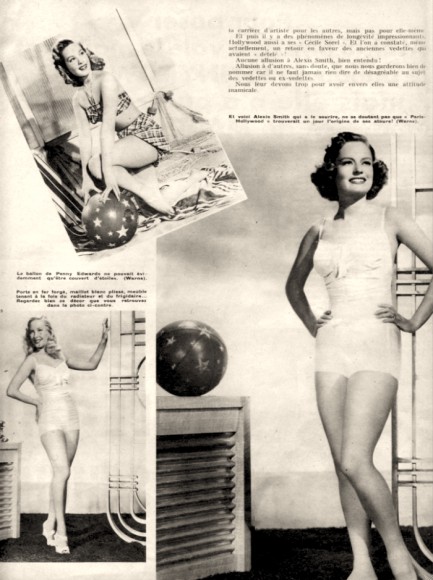 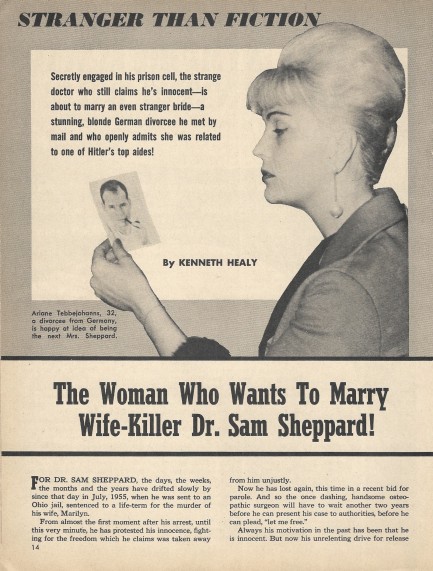 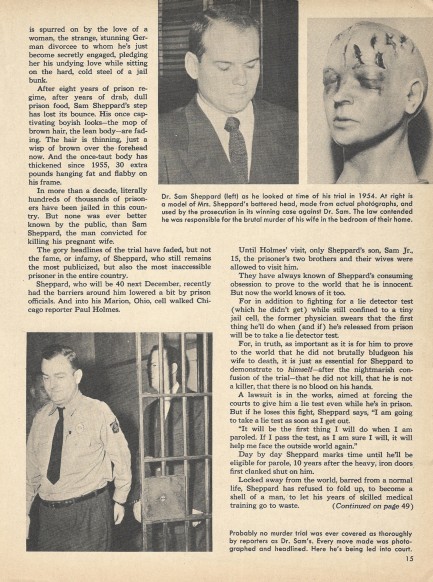 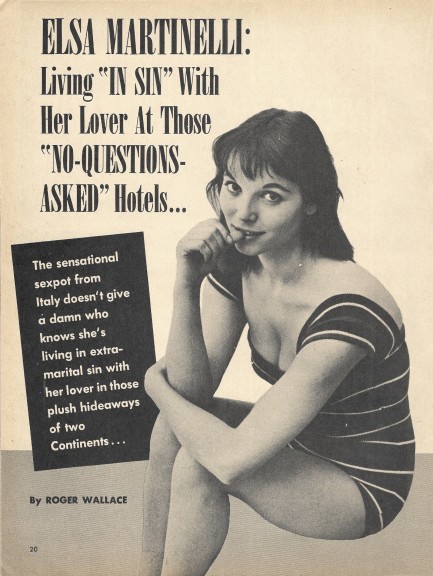 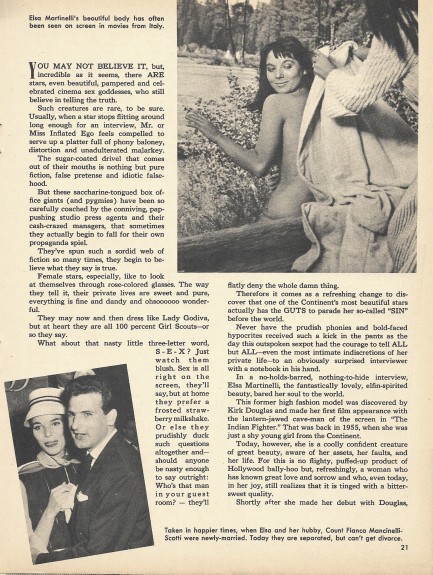 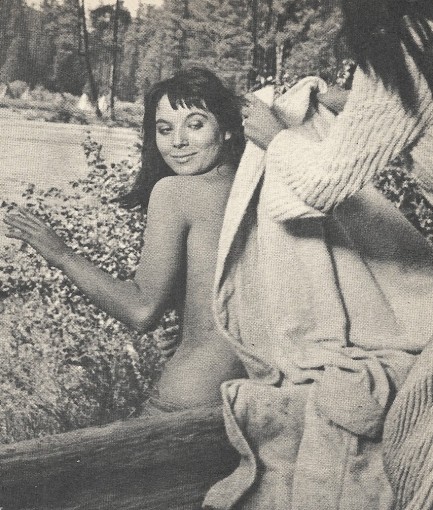 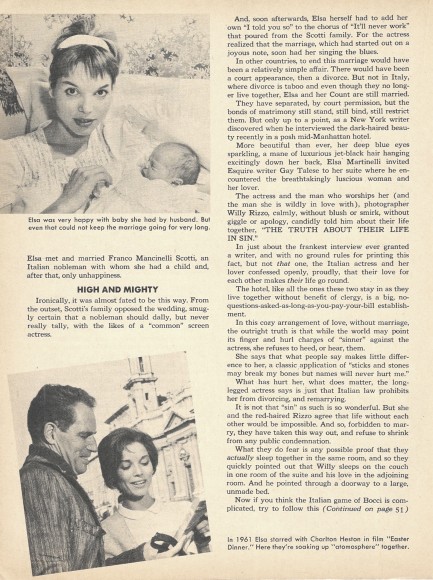 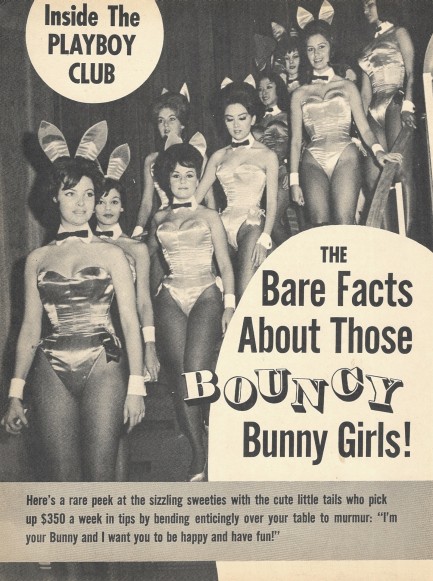 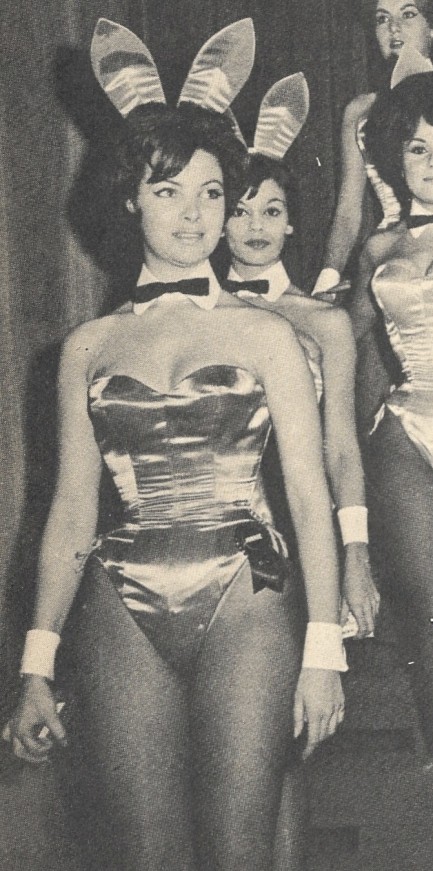 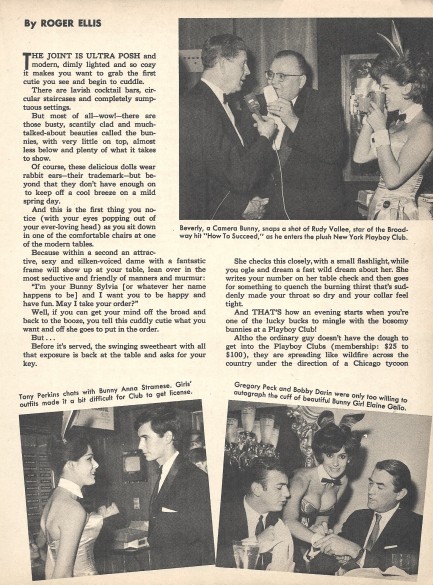 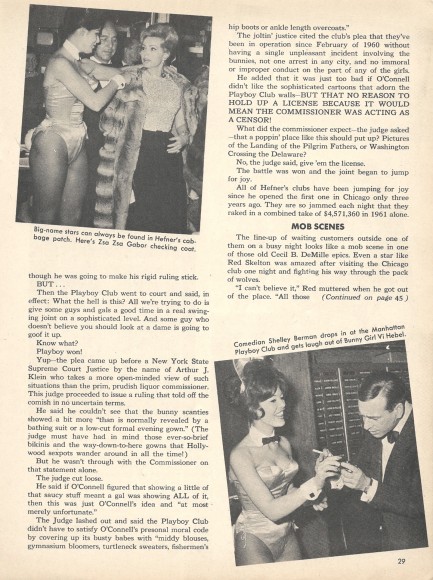 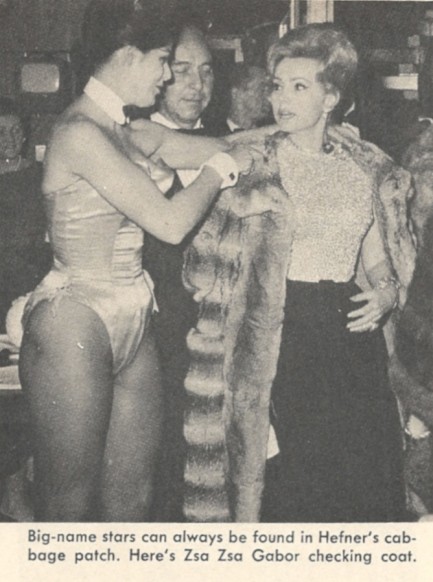 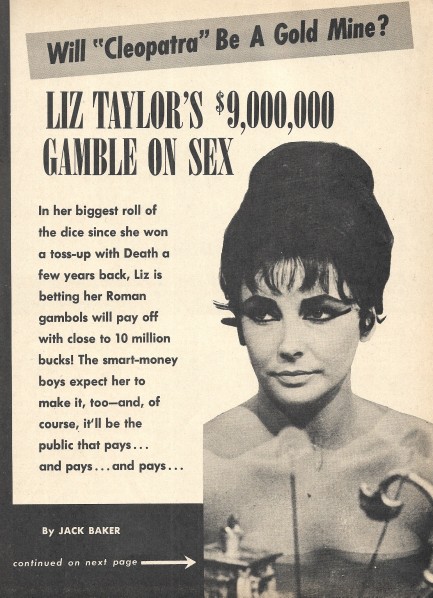 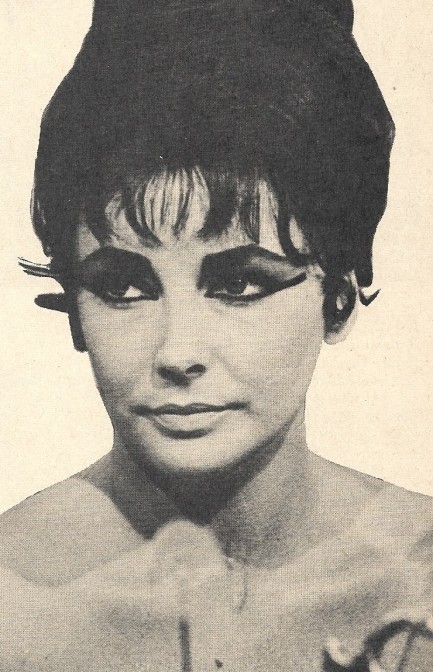 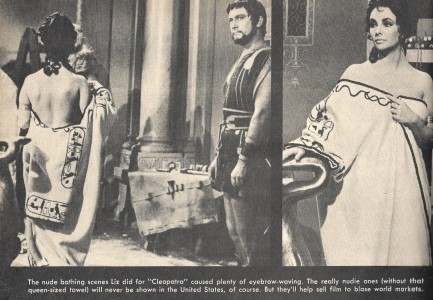 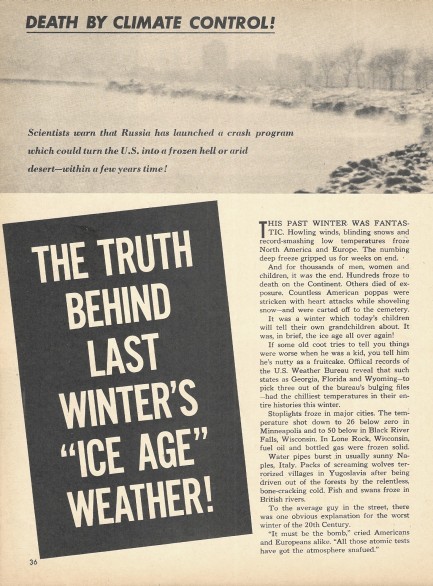 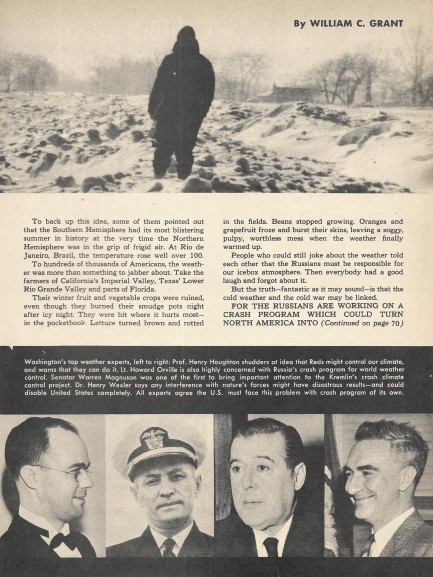 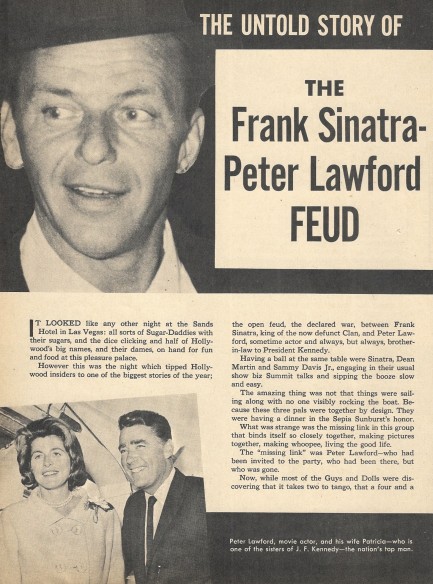 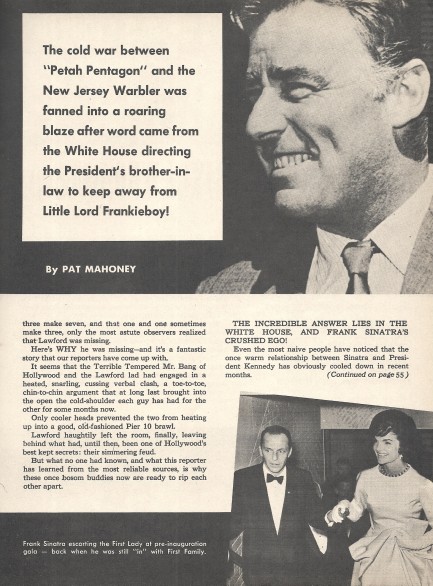 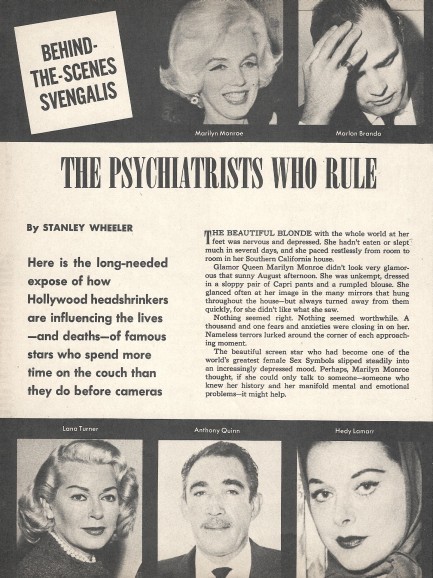 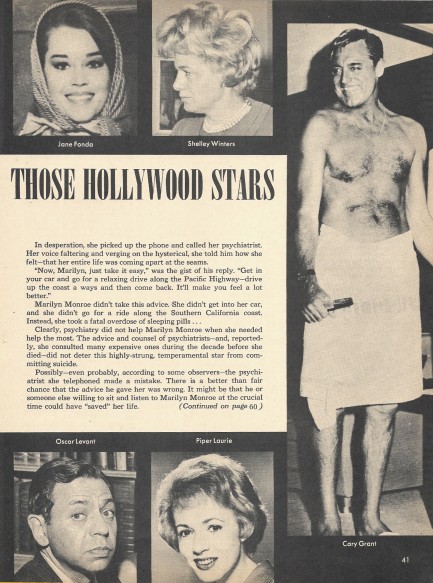 
 All other predators pale by comparison. 
Belgium usually delivers when it comes to vintage film posters. Above is a Belgian promo in French and Dutch for the iconic chiller The Night of the Hunter, titled in French La nuit du chasseur and in Dutch De jagersnacht. “Jagersnacht” sounds like something weird and wicked, like a monster from Lewis Carroll, but it means the same as the English title—“hunter's night.” Belgian vintage posters often bear the name of the exhibiting cinema. We've shared examples from Ciné Odeon, Acropole, Varieties, Plaza, and Capitole, twice. The above poster bears the name of Cinemax, which was located at 27 Rue de Malines in Antwerp, and was called at different times the Cineum, Rubens, and Apollo. Looking more closely at the art, it was printed by L.F. de Vos & Co. S.A. Anvers, also from Antwerp, and the work is signed by “RK”—if we're reading it correctly. We've got nothing on RK, but his or her work is top notch, so we'll keep an eye out for more. Night of the Hunter premiered in the U.S. in 1955 and reached Belgium today in 1956.
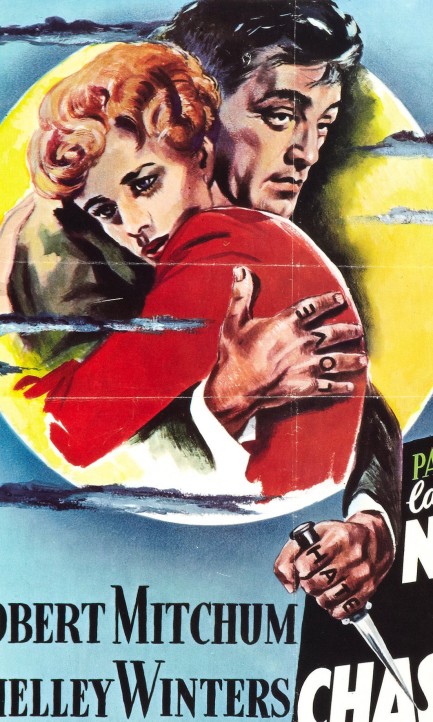
 The most inhospitable season just got worse. 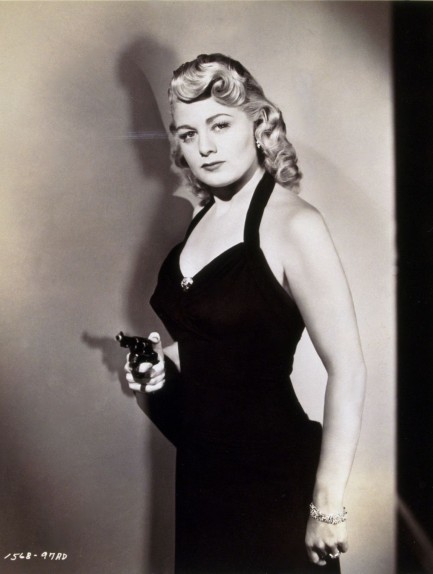
Shelley Winters, née Shirley Schrift, was one of the top actresses in Hollywood for five decades. Her notable films are many, and include A Place in the Sun, Night of the Hunter, Lolita, Alfie, The Poseidon Adventure, and even Cleopatra Jones. The above photo sees her in moll mode and was made for her 1948 crime drama Larceny. It's yet another film we haven't seen, but we'll get to it.
 It was the Whisper heard from coast to coast. 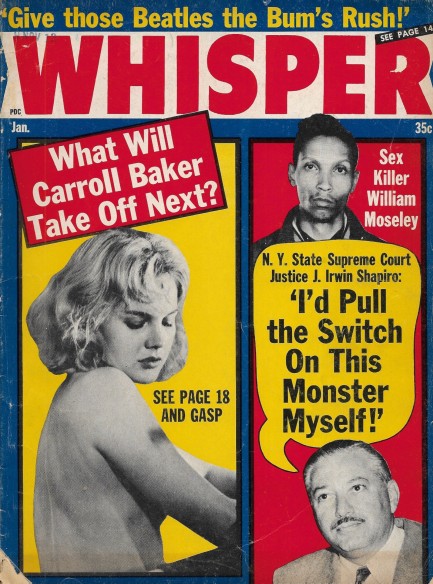
Above is a cover of the tabloid Whisper from January 1965, with actress Carroll Baker, convicted murderer Winston Moseley, and New York judge J. Irwin Shapiro starring on the front. But before we get into the magazine, we want to share the good news that our longtime scanning problems are fixed. We didn't get a new scanner, though. We got a new computer—a Mac Studio with plenty under the hood. It's quicker than the old Mac, but it also changed the functionality of the scanning interface. The whole process runs differently, and is about three times faster now. So you'll be seeing more magazines in the future. Turning back to Whisper, Winston Moseley—who editors call William for some reason—was America's villain of the moment for the murder of Catherine Genovese, who he stalked, stabbed with a hunting knife, then found again where she had taken refuge in a building, and finished her off. Additionally, Moseley was a necrophiliac. He raped his victims—of which there were three total—post-mortem. Of the trio of victims Genovese is the one that's remembered today because her murder sparked a national reckoning about the relationship between citizens and the police, as well as life in big cities, because the press reported that thirty-eight people had seen the crime happening but had done nothing. As it turned out, that number was wildly inaccurate, but never let the truth get in the way of perfectly cooked, juicy tabloid outrage. A quote appeared in nearly every story about the murder: “I didn't want to get involved.” New York City—where the crime occurred—and other metropolitan centers were criticized as uncaring places. Author Harlan Ellison, who at that time was writing urban crime fiction, weighed in, saying, “not one of [the witnesses] made the slightest effort to save her, to scream at the killer, or even to call the police.” Peak outrage was achieved by New York State Supreme Court Justice J. Irwin Shapiro when he expressed a desire to execute Moseley himself. In the end, Moseley wasn't executed at all. He died in prison in 2016 at age eighty-one.
Elsewhere in Whisper, you'll notice that the magazine is—unsurprisingly, given the time period and nature of the publication—antagonistic toward gay men, as demonstrated by the panel with the blaring text: “Who's Queer Asked the Peer?” But what is a surprise is that later in the issue the editors run a detailed piece on transvestites and transsexuals, and the approach is very different than the contempt shown toward homosexuality. As we've pointed out many times before, mid-century tabloids had a deep interest in trans issues. The story is titled, “A Doctor Answers What Everyone Wants To Know About Sex Change Operations.” The tone is as follows:
The condition he referred to was the common plight of all male transsexuals. Physically he was a man, but emotionally and personality-wise he was a woman, a condition that made it difficult to find successful employment, and to live at all happily. Fortunately, in his case, he had a lawyer and a wise judge who were able to help him in his wish to go to Europe for a sex change operation so that his body could be brought into greater harmony with his mind, and enable him to work and live with a degree of happiness he had never known before.
That's respectful—if not even compassionate—for a 1965 publication considered lowbrow by sophisticated readers. Is it a paradox that the magazine could be so evil toward gay men, yet so civil toward transsexuals? We think so, and we'd love to know the thought process behind it. While we're puzzling that out, you may want to move on to Whisper's slate of celebrity news. Everyone from Romy Schneider to Ernest Borgnine get their due exposure. We've uploaded the magazine's “Behind the Whispers” feature, so you can get the dish on a few Hollywood stars. Please enjoy.
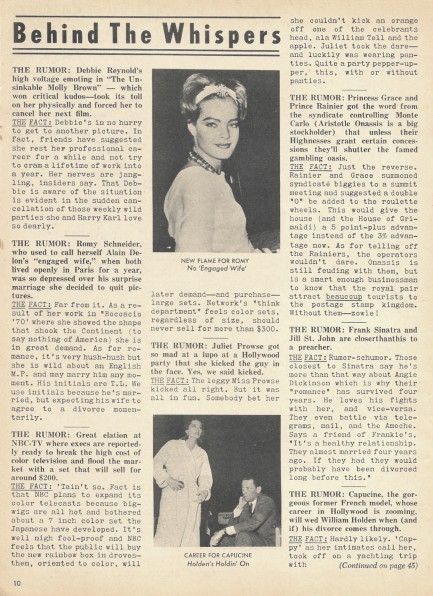  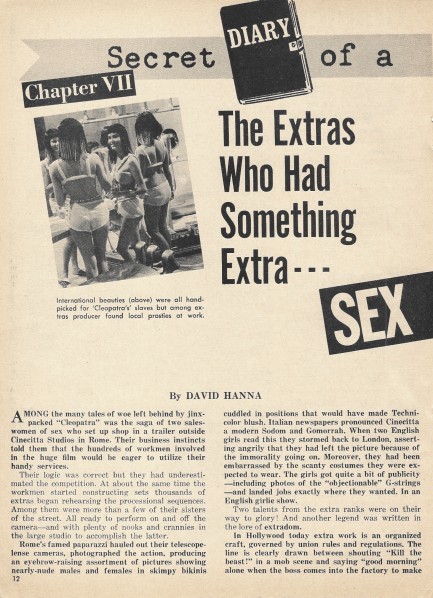 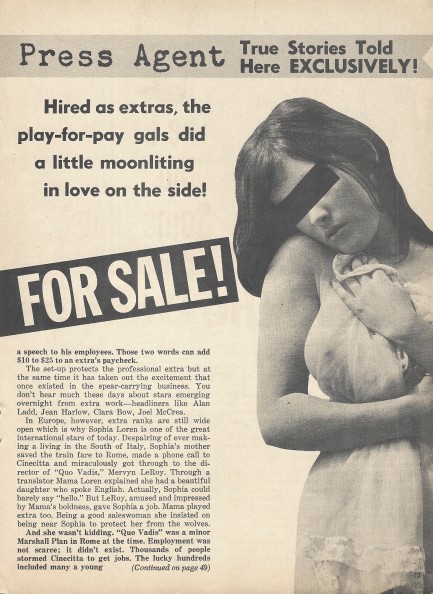 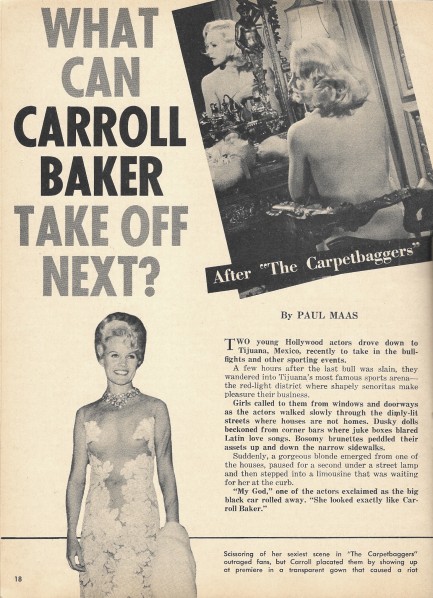 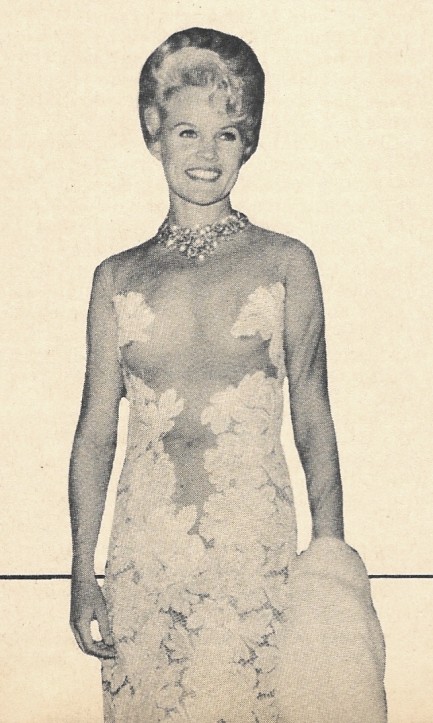 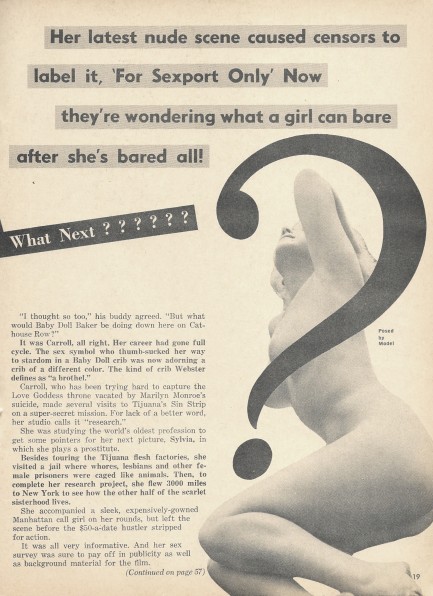 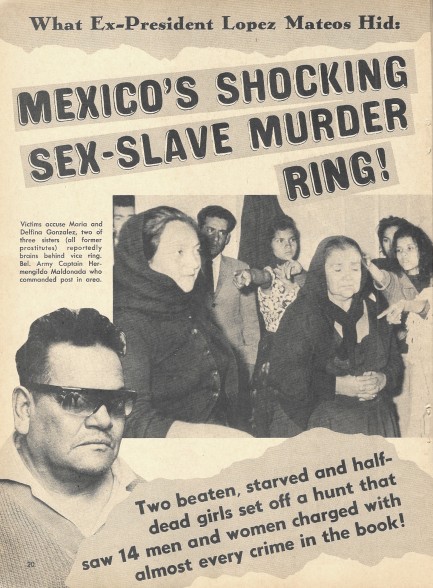 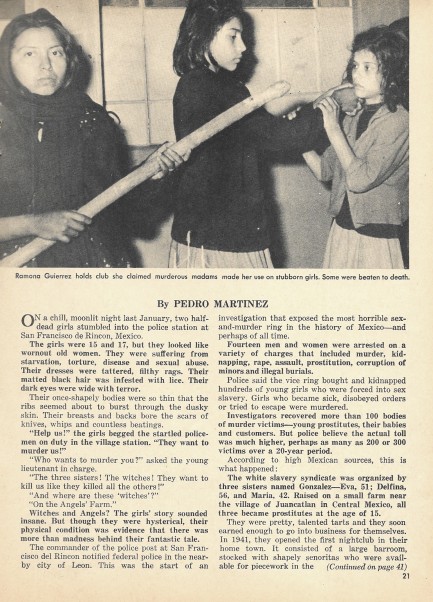 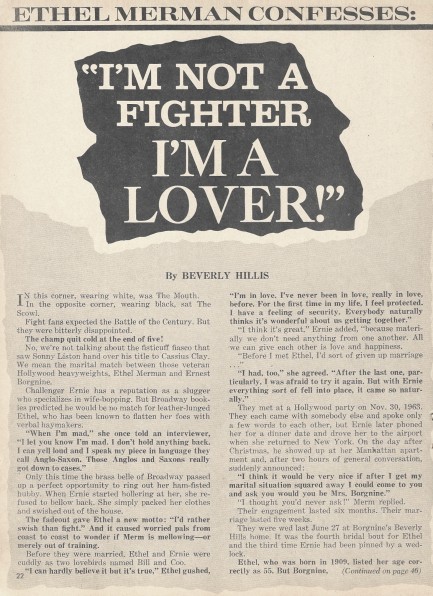 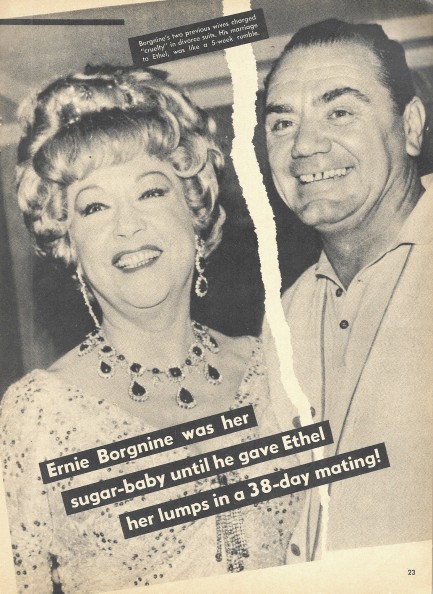 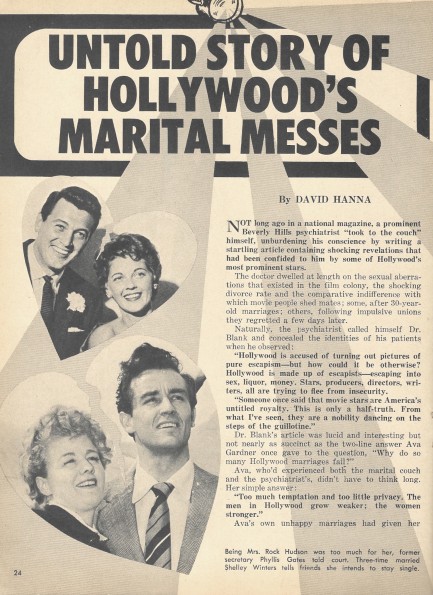 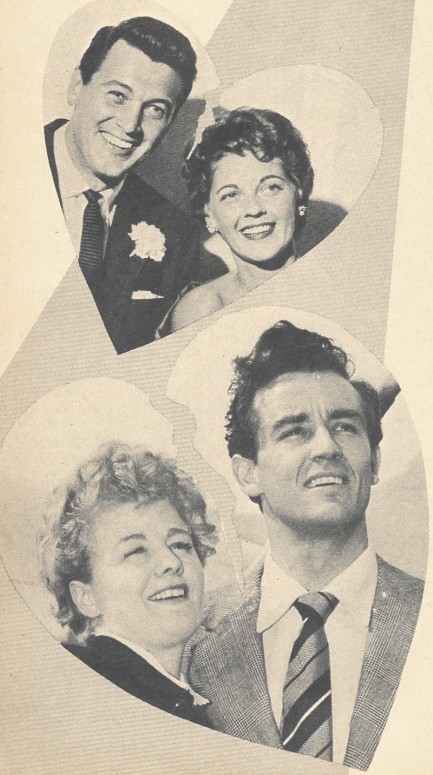 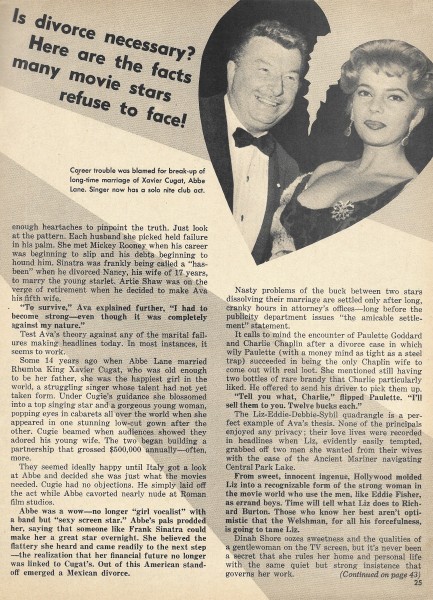  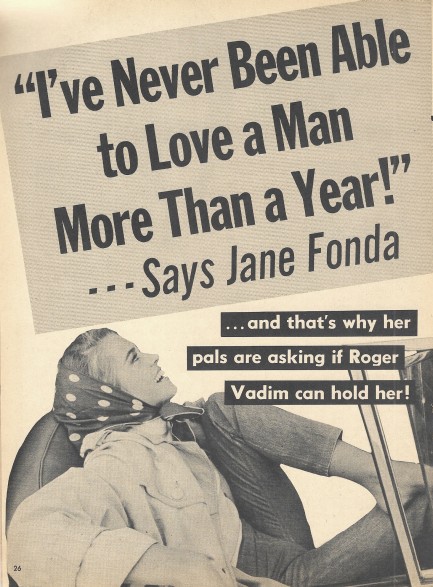 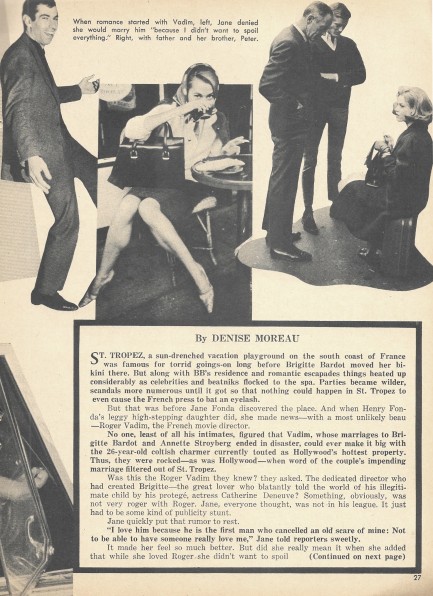 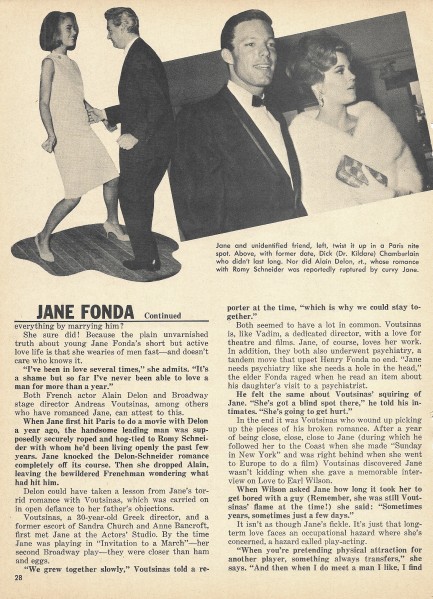 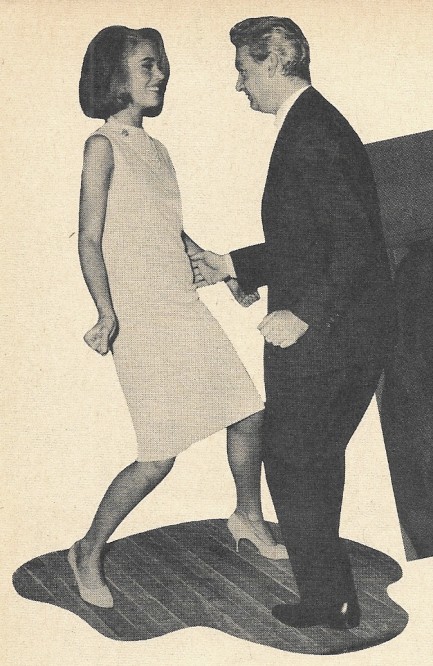 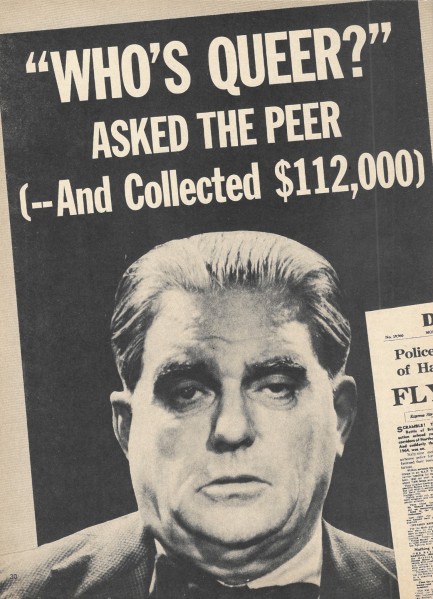 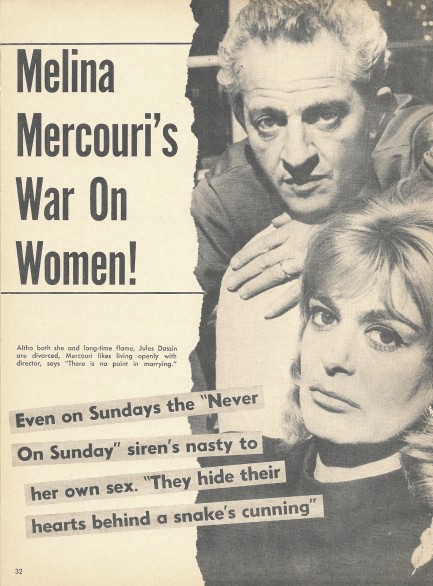 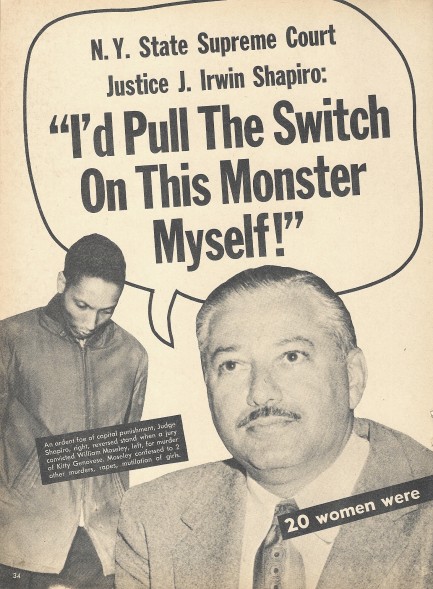 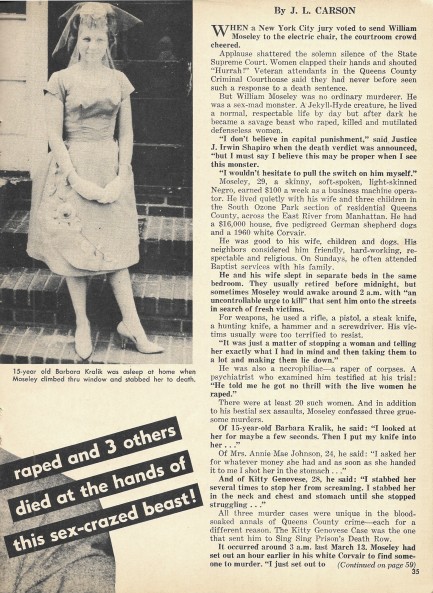 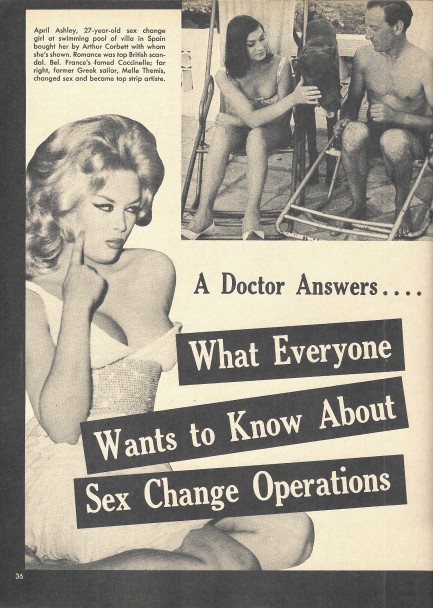 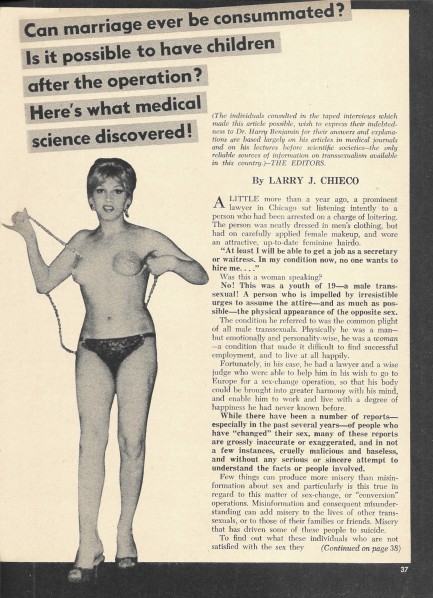 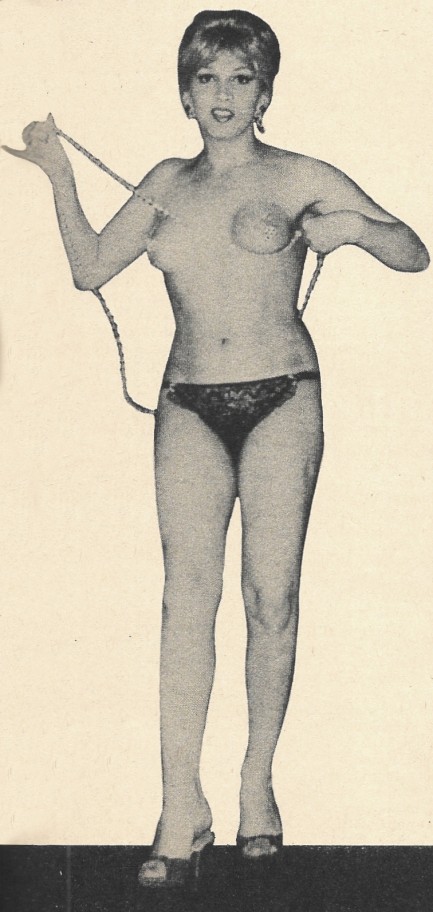 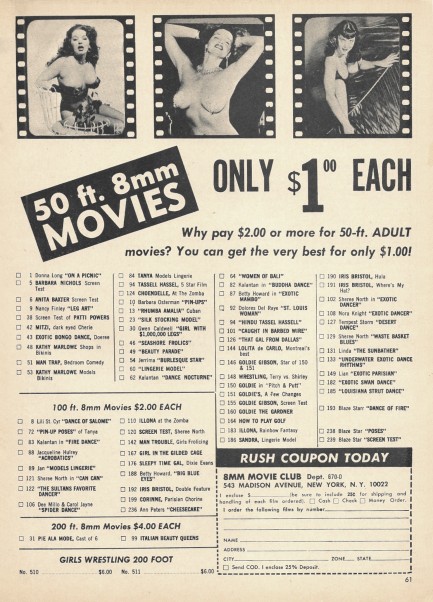
 They'll have to choose what they hate more—their circumstances or each other. 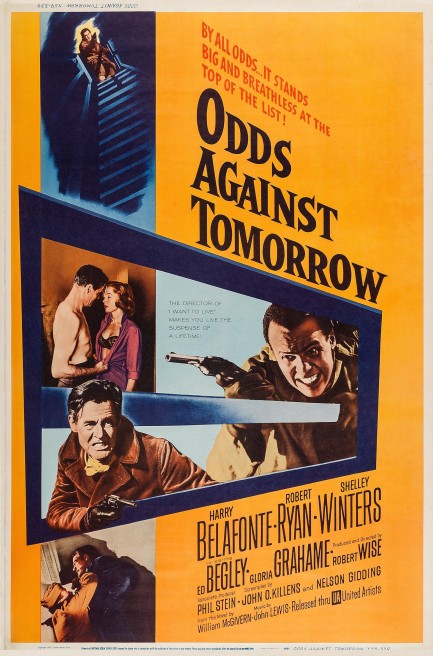
The Noir City Film Festival rolls on with Robert Wise's 1959 thriller Odds Against Tomorrow. Harry Belafonte and Robert Ryan star in a heist story that brings a touch of underground jazz and an edge of racial tension to the narrative mix. It would play nicely on a double bill with In the Heat of the Night, but fits at Noir City too. In fact it might be the darkest film noir on the bill. Belafonte is in debt to mobsters and Ryan is broke and feels emasculated being supported by his girlfriend. When ex-cop Ed Begley brings the two together for a lucrative robbery both see it as the only answer. The robbery has the same problems associated with any heist, with the added complication of Ryan's racism.
Some reviews of this film try to suggest equivalence between these two characters. Uh, no. Belafonte's separatist leanings and distrust of whites in a society that is unfair toward him is a precaution; Ryan's separatist leanings and distrust of blacks in a society that favors him is oppression. This is a basic sociological truth as it relates to power in any society, and it's irksome that some reviewers miss this. Belafonte responds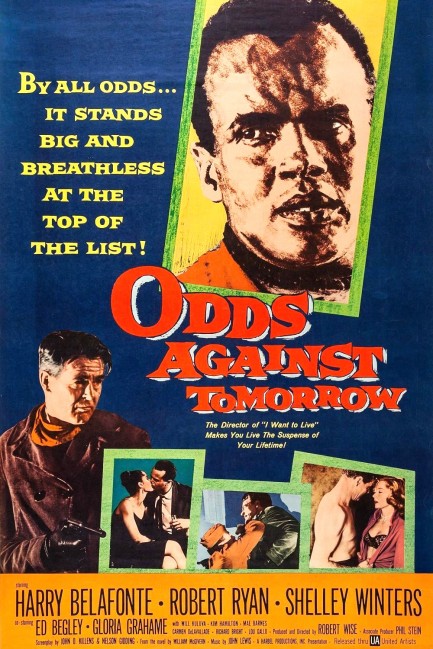 to aggressive hate with reactive hate. The expectation that he possess superhuman forbearance while his oppressor can be merely human removes context and wrongly demands that everybody behave identically despite their different circumstances and different locations within the spectrum of power. to aggressive hate with reactive hate. The expectation that he possess superhuman forbearance while his oppressor can be merely human removes context and wrongly demands that everybody behave identically despite their different circumstances and different locations within the spectrum of power.
Much of the movie examines Belafonte's and Ryan's respective attitudes along these lines, with the heist coming in a flurry of action at the end. The robbery is basically foolproof, but only if the powder keg of racial resentment doesn't blow it sky high. The points Wise is making here, which originate with William P. McGivern's novel, are simply these: cooperate and succeed, or fight and fail. All Ryan needs to do is extend the hand of respect, but because of his prejudice he fails again and again, which hardens Belafonte's already suspicious attitudes. Who do these two hate more—their circumstances or each other? That's what Odds Against Tomorrow asks, about its characters, and America. Noir City festivalgoers will leave the cinema talking about this one. 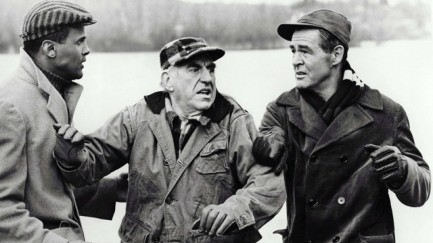
 The Big Knife could be sharper but its lessons about Hollywood ruthlessness resonate. 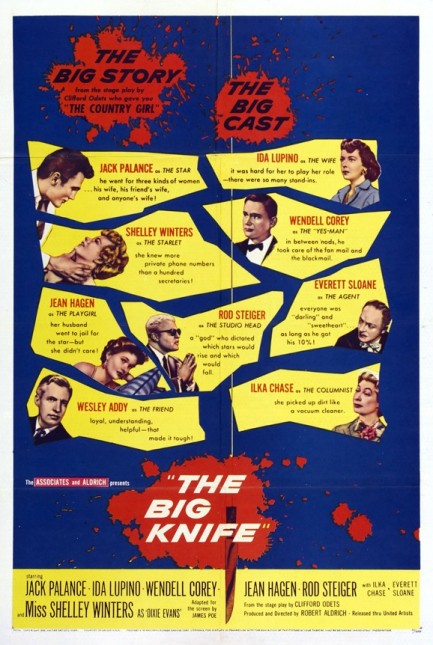
Above you see a poster for the 1955 drama The Big Knife, which, along with The Bad and the Beautiful, plays on tonight’s dark-side-of-Hollywood double bill at the Noir City Film Festival. Based on Clifford Odets’ play of the same name, The Big Knife tells the story of a star actor who wants to expand artistically, but is being tormented by his studio boss to ink a new deal locking him into more of the unfulfilling schlock that put him on the map. The studio has leverage because it helped the actor—played by Jack Palance—hide his role in causing a fatal car accident years ago. The studio boss—Rod Stieger, shamelessly hamming up the place (see photo below)—will stop at nothing, including blackmail, to get the contract signed. The stage-based origins of The Big Knife are clear, as the action rarely leaves one room and the dialogue is at times florid, but the question of whether Palance has the constitution to stand up to Stieger’s abuse offers some tension, and Ida Lupino as Palance’s wife helps elevate the exercise. Above average, we’d call this one, but we think festivalgoers will like The Bad and the Beautiful a lot better. 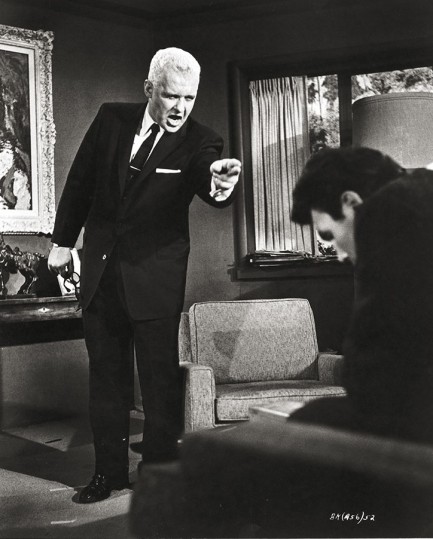
 Sørensen throws Playboy fans off her trail. 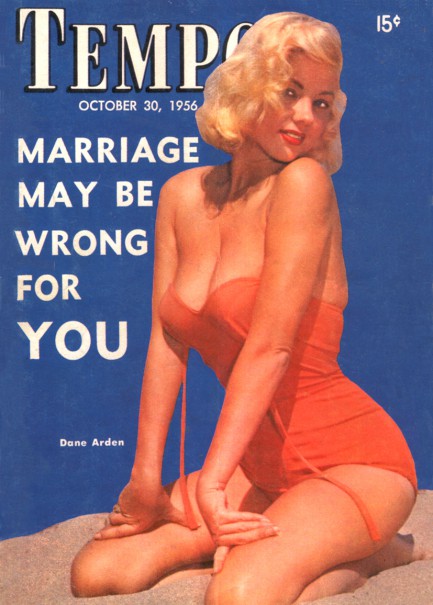
Tempo was a pocket-sized celeb and pop culture magazine published bi-weekly out of Atlanta and New York City by Sports Report, Inc. We don’t know how long it lasted—this one is vol. 7, issue 9—but we know we’ve never seen one dated before 1953 or after 1958. When Dane Arden appeared on the cover of this one from today in 1956, she was already famous thanks to her appearance as Playboy’s centerfold just the previous month. But she had posed under her real name Elsa Sørensen, and back then that may have kept most Playboy readers from realizing Sørensen and Arden were the same person. It's curious. We have no idea if that was her intention, or why she’d have wanted to do it.
If we had to guess, we'd say that Playboy wanted an exclusive association with her Sørensen identity, and pressed her to choose a new name for future modeling. Or perhaps she thought of magazines like Tempo as lower class, and didn’t want to diminish her Playboy image. Or maybe she thought Elsa Sørensen was a little too Danish sounding for Hollywood. But there’s no evidence she ever had an interest in movies, and if she did wouldn’t she have been sacrificing much of the useful recognition she’d gained as a Playboy centerfold? All we can say is it’s one of history’s little mysteries. Hmm… that has a nice ring. Think we’ll claim that one—History’s Little Mysteries™. More Dane/Elsa below, plus Brigitte Bardot, Shirley Falls, Erroll Garner, Sabrina, the Cleveland Browns, Anita Ekberg, et al.
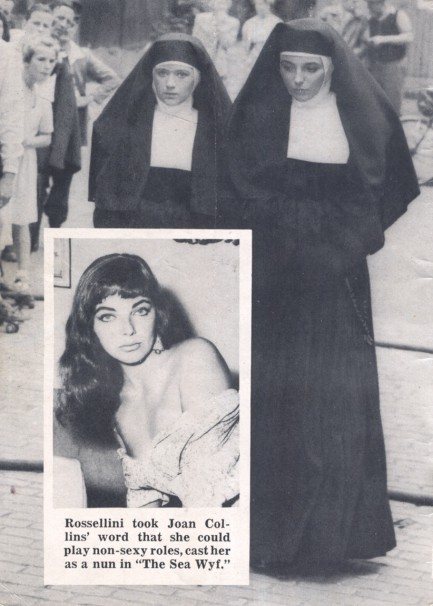 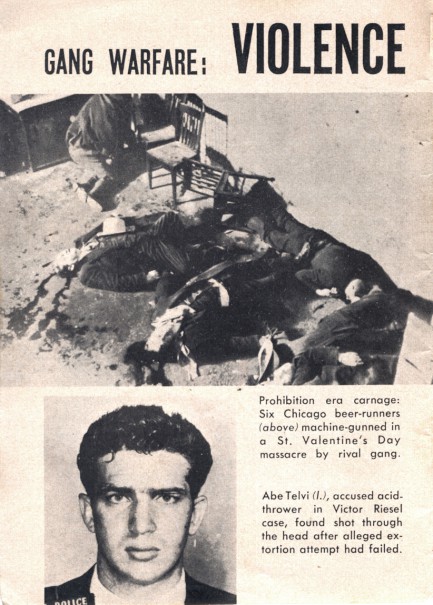  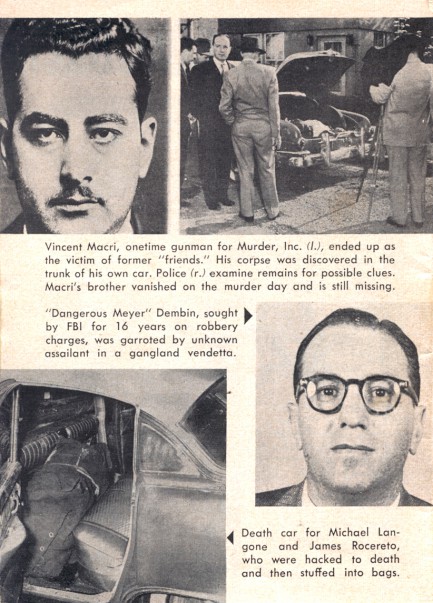 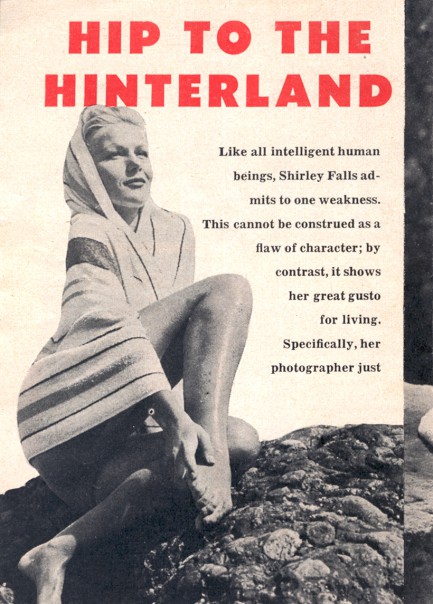 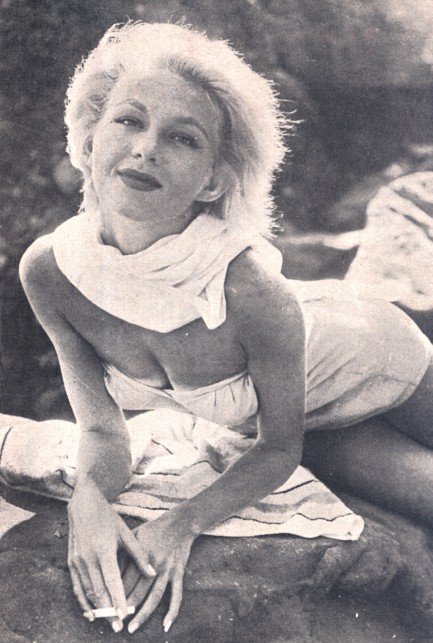 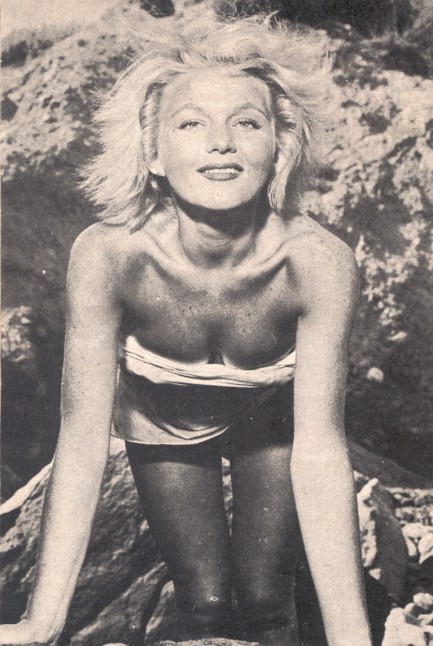 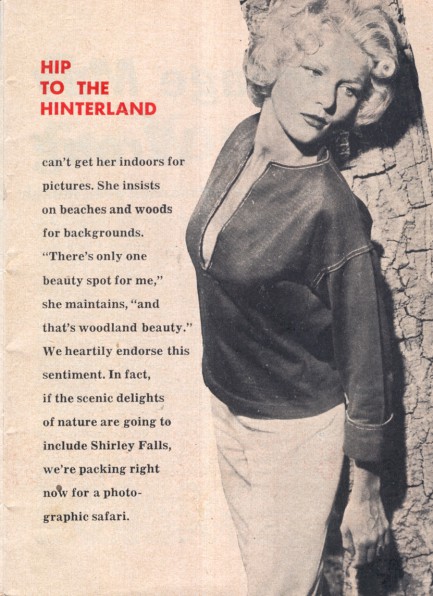 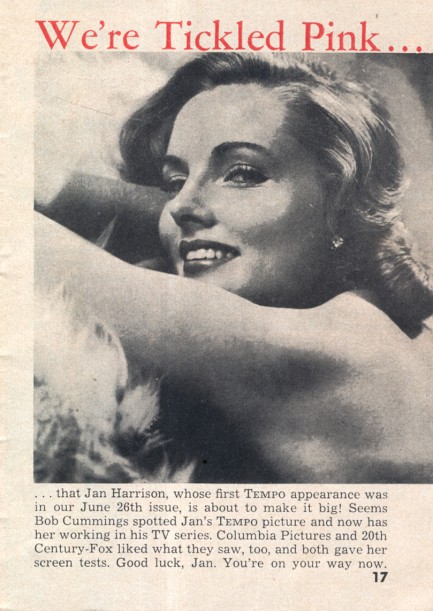 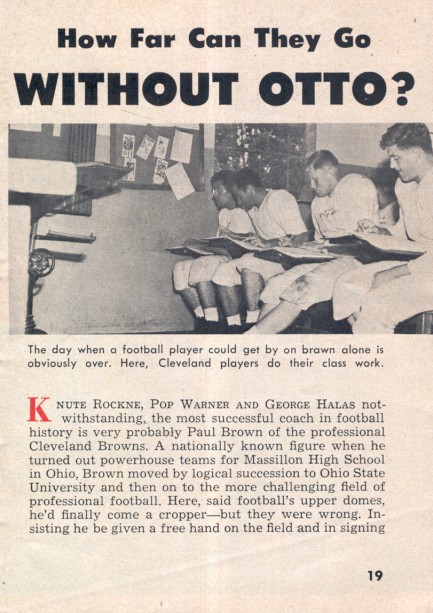 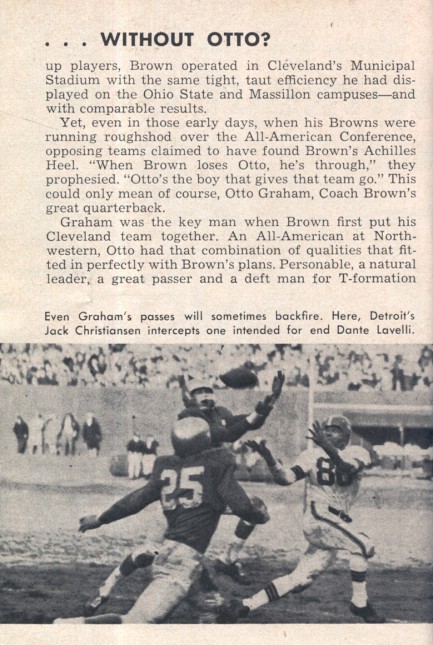 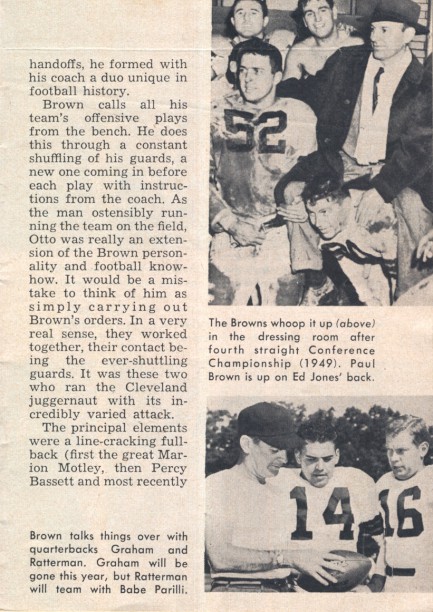 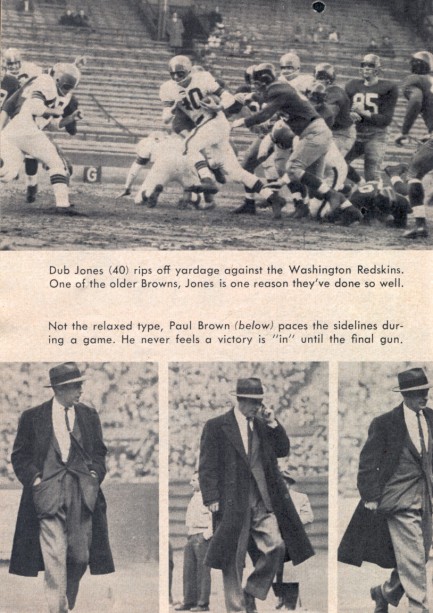 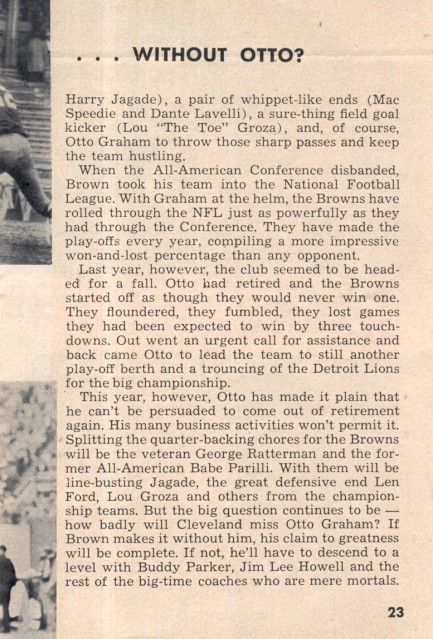 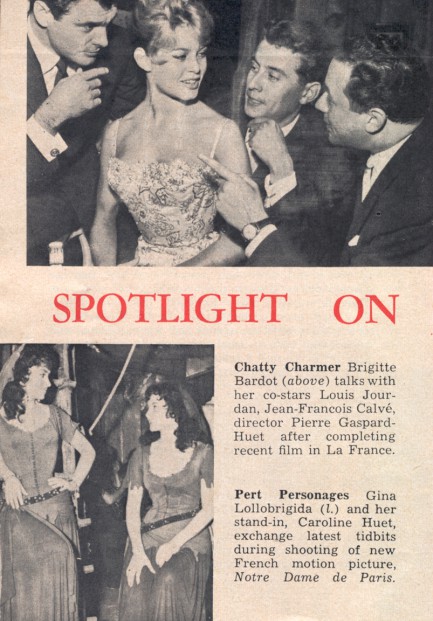 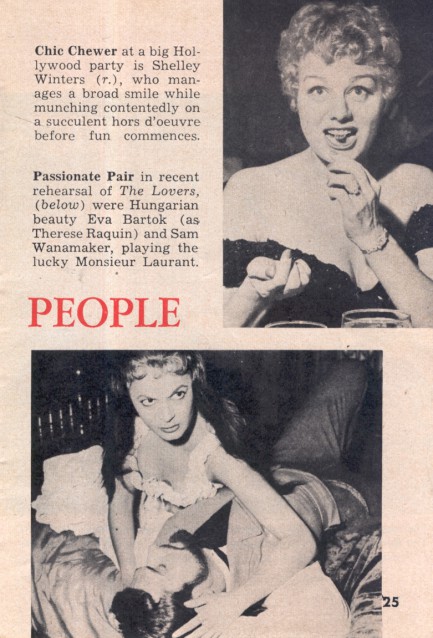  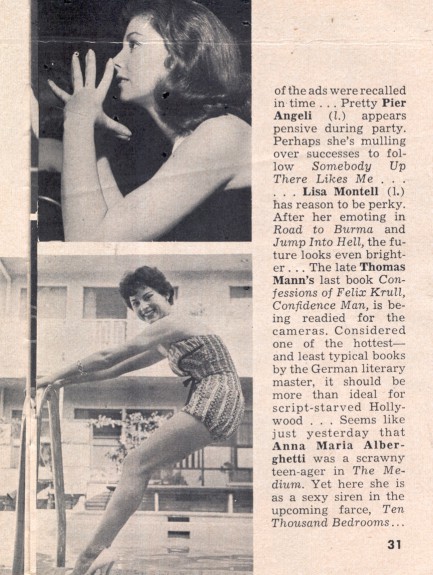 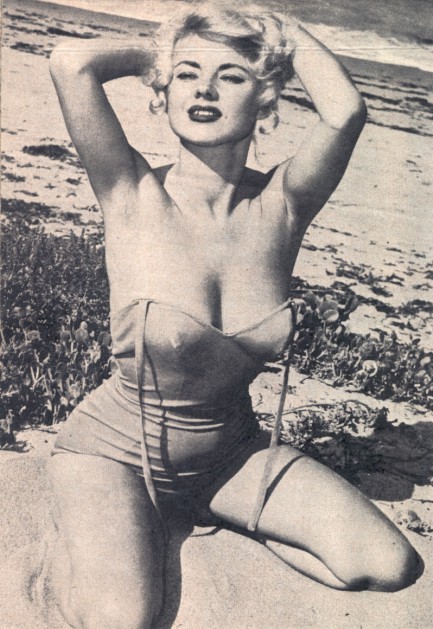 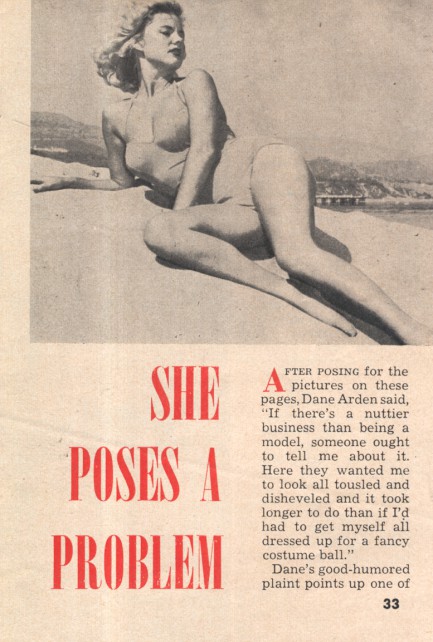 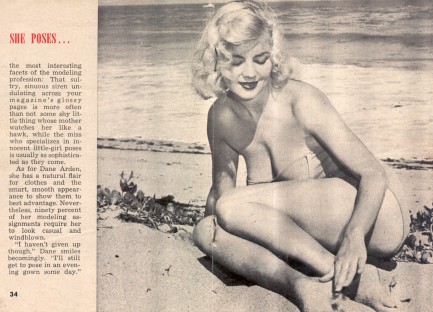  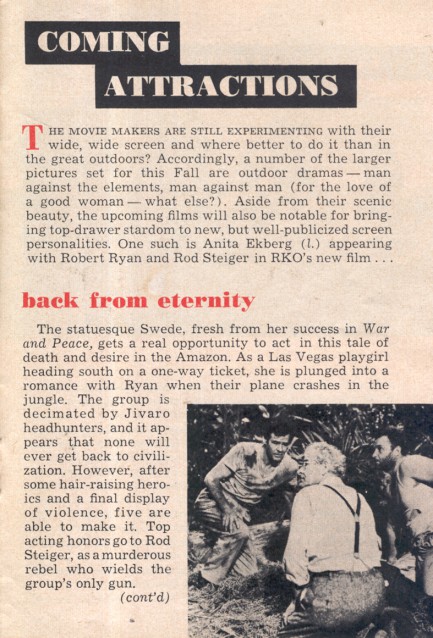 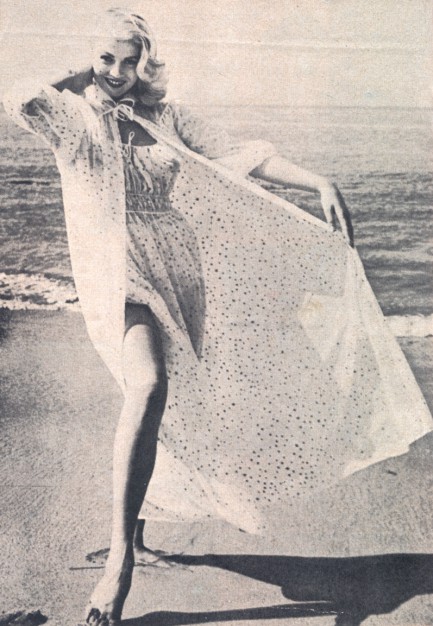 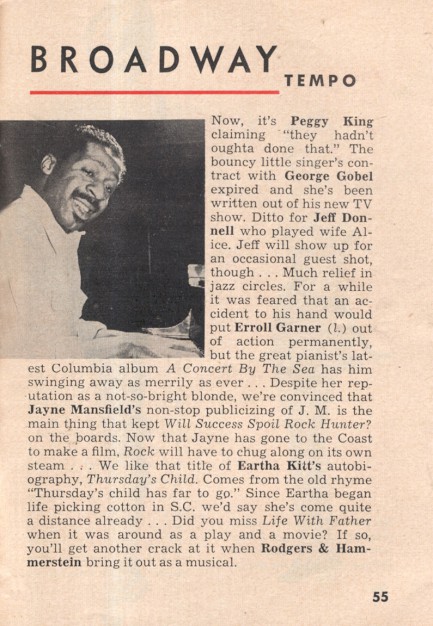 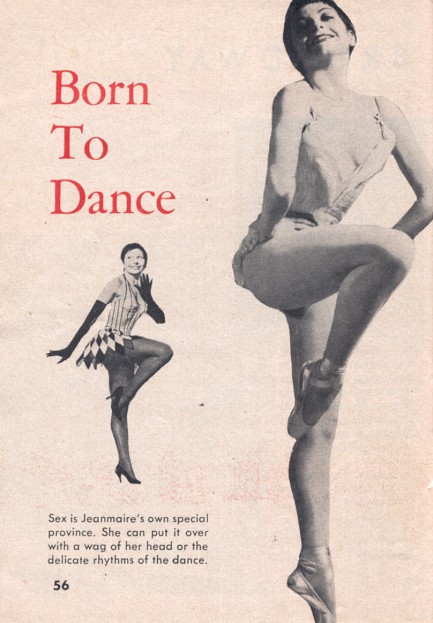 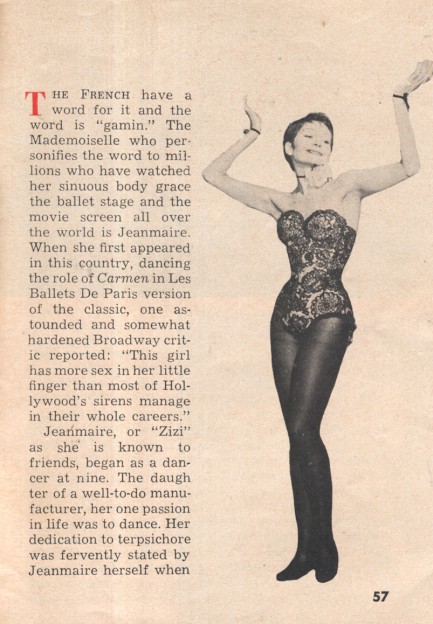  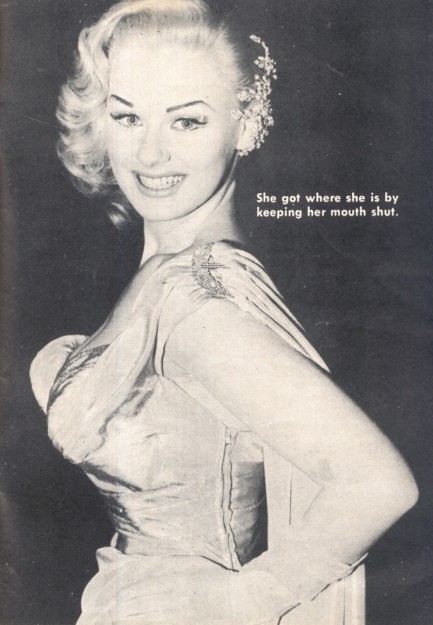 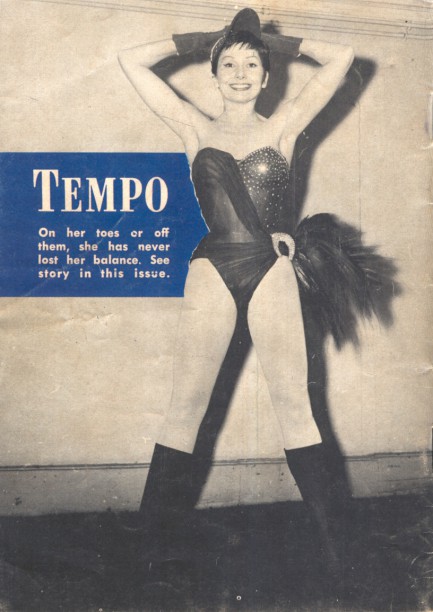
 Only the good go to sleep at night. 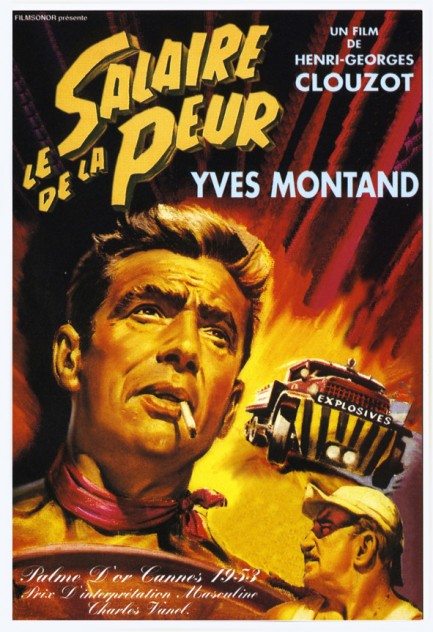
The French coined the term film noir, so it seems only fitting to feature a collection of French posters celebrating the genre. Above and below are fifteen examples promoting films noir from France, Britain, and the U.S., representing some of the best ever produced within the art form, as well as some less celebrated examples that we happen to love. Of those, we highly recommend seeing Le salaire de la peur, for which you see the poster above, and Ride the Pink Horse, below, which played as Et tournent les chevaux de bois in France. Just a word about those films (and feel free to skip ahead to the art, because really, who has time these days to listen to a couple of anonymous internet scribes ramble on about old movies?). 1953’s Le salaire de la peur is about a group of men stranded in an oil company town in the mountains of Latin America. In order to earn the wages to get out, four of them agree to drive two trucks filled with nitroglycerine over many miles of dangerous terrain. The idea is to use the chemicals to put out a raging oil well fire that is consuming company profits by the second, but of course the film is really about whether the men can even get there alive. Le salaire de la peur was critically praised when released in Europe, but in the U.S., political factions raised their ugly heads and got censors to crudely re-edit the prints so as to reduce the movie’s anti-capitalist (and by extension anti-American) subtext. The movie was later remade by Hollywood twice—once in 1958 as Hell’s Highway, and again in 1977 as Sorcerer. The original is by far the best.
1947’s Ride the Pink Horse is an obscure noir, but a quintessential one, in our opinion. If many noirs feature embittered World War II vets as their anti-heroes, Robert Montgomery’s Lucky Gagin is the bitterest of them all. He arrives in a New Mexico border town on a quest to avenge the death of a friend. The plot is thin—or perhaps stripped down would be a better description—but Montgomery’s atmospheric direction makes up for that. Like a lot of mid-century films featuring ethnic characters, the most important one is played by a white actor (Wanda Hendrix, in a coating of what looks like brown shoe polish). It's racist, for sure, but within the universe of the film Lucky Gagin sees everyone around him only as obstacles or allies—i.e., equals within his own distinct worldview. So that makes up for it. Or maybe not. In any case, we think Ride the Pink Horse is worth a look. Thirteen more posters below.

|
 |

The headlines that mattered yesteryear.
2003—Hope Dies
Film legend Bob Hope dies of pneumonia two months after celebrating his 100th birthday. 1945—Churchill Given the Sack
In spite of admiring Winston Churchill as a great wartime leader, Britons elect
Clement Attlee the nation's new prime minister in a sweeping victory for the Labour Party over the Conservatives. 1952—Evita Peron Dies
Eva Duarte de Peron, aka Evita, wife of the president of the Argentine Republic, dies from cancer at age 33. Evita had brought the working classes into a position of political power never witnessed before, but was hated by the nation's powerful military class. She is lain to rest in Milan, Italy in a secret grave under a nun's name, but is eventually returned to Argentina for reburial beside her husband in 1974. 1943—Mussolini Calls It Quits
Italian dictator Benito Mussolini steps down as head of the armed forces and the government. It soon becomes clear that Il Duce did not relinquish power voluntarily, but was forced to resign after former Fascist colleagues turned against him. He is later installed by Germany as leader of the Italian Social Republic in the north of the country, but is killed by partisans in 1945.
|

|
|

It's easy. We have an uploader that makes it a snap. Use it to submit your art, text, header, and subhead. Your post can be funny, serious, or anything in between, as long as it's vintage pulp. You'll get a byline and experience the fleeting pride of free authorship. We'll edit your post for typos, but the rest is up to you. Click here to give us your best shot.

|
|



































































 to aggressive hate with reactive hate. The expectation that he possess superhuman forbearance while his oppressor can be merely human removes context and wrongly demands that everybody behave identically despite their different circumstances and different locations within the spectrum of power.
to aggressive hate with reactive hate. The expectation that he possess superhuman forbearance while his oppressor can be merely human removes context and wrongly demands that everybody behave identically despite their different circumstances and different locations within the spectrum of power.





